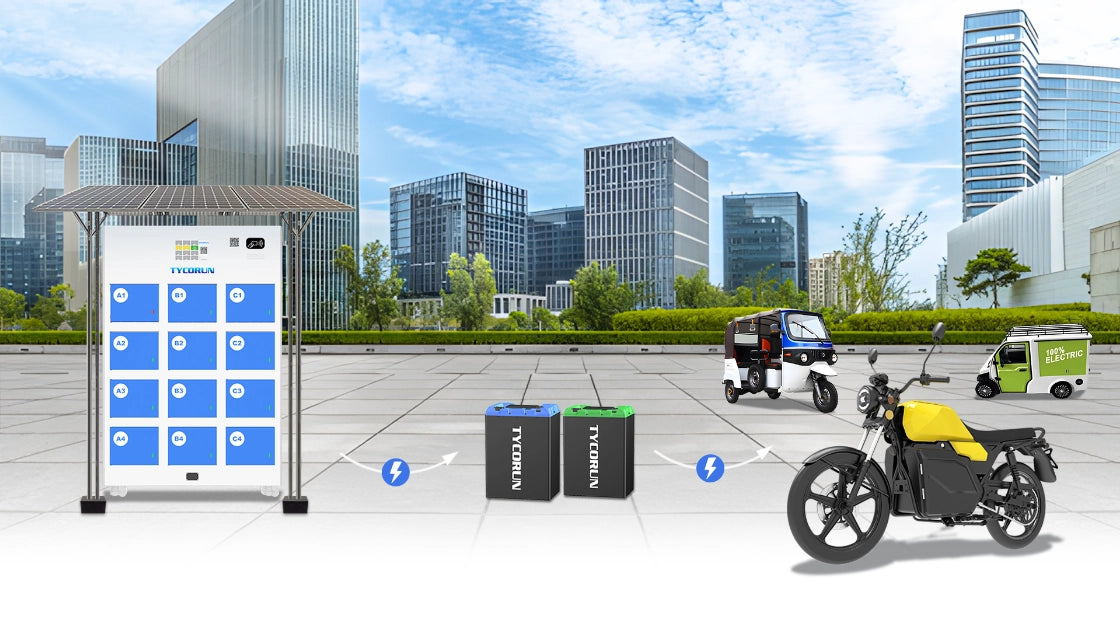As battery technology advances, understanding technical terms becomes essential for both professionals and everyday users. One key factor is the C rating, which defines how fast a battery can charge or discharge safely. But what does C mean in batteries, and why is it so important? This article explains the concept in simple terms—covering its meaning, calculation, and the factors that influence it. Whether you use batteries for electric vehicles, drones, or everyday use, learning about C rating helps you choose the right battery for performance, safety, and longer lifespan.

Main content:
- What Does C Mean in Batteries?
- Why Understanding C Rating Matters
- Battery C Rating Chart
- Why C Ratings Differ Among Batteries
- How to Calculate Battery C Rating
- Rating and Its Relationship With Battery Capacity
- How C Rating Affects Charging and Discharging
- Real-World Applications of C Rating
- Improving Battery Performance with C Rating Awareness
- Conclusion
- FAQs
What Does C Mean in Batteries?
To start simple — “C” stands for capacity. When you see a C rating on a battery, it’s referring to the relationship between the battery’s capacity and the rate at which it can be charged or discharged safely.
In plain terms, C is a multiplier that tells you how fast or slow a battery can supply power without overheating or damaging its internal components.
For example:
- A 1C battery means it can discharge its full capacity in one hour.
- A 2C battery can deliver twice its capacity in one hour, or fully discharge in 30 minutes.
- A 0.5C rate means it takes two hours to discharge fully.
So if a 2000mAh (2Ah) battery has a 1C discharge rate, it can safely deliver 2A of current continuously. If it has a 5C rating, it can provide 10A (2Ah × 5 = 10A) continuously.
The higher the C rating, the more power the battery can output in a short time, which is critical for high-performance devices like drones, e-bikes, and electric vehicles.
Why Understanding C Rating Matters
Understanding what does C mean in batteries isn’t just for engineers, it’s essential for anyone choosing a power source for demanding devices.
Here’s why:
- Performance Matching – Using a battery with too low a C rating can cause voltage drops, sluggish performance, or even shutdowns in high-power devices.
- Safety – Overdrawing current from a low C-rated battery can cause it to overheat, swell, or in extreme cases, catch fire.
- Battery Longevity – Selecting the correct C rating helps maintain your battery’s health over hundreds of cycles.
- Energy Efficiency – When your battery operates within its C limits, it performs more efficiently and wastes less energy as heat.
So, if you’re building an RC car or choosing a lithium battery for your solar system, knowing what does C mean in batteries helps ensure you’re pairing your equipment with the right power source.
Battery C Rating Chart
To better visualize how C ratings affect discharge times, take a look at the following simplified chart:
|
C-Rating |
Discharge Time (Approx.) |
|
0.5C |
2 hours |
|
1C |
1 hour |
|
2C |
30 minutes |
|
5C |
12 minutes |
|
10C |
6 minutes |
|
15C |
4 minutes |
|
20C |
3 minutes |
This chart shows that the higher the C rating, the faster the discharge. In other words, a 10C battery can deliver its full energy in just six minutes, whereas a 1C battery would take an hour.
But keep in mind, faster discharge means more stress on the battery. That’s why it’s important not to exceed the C rating recommended by the manufacturer.
For modern lithium-ion and LiFePO4 batteries, you’ll often find different C ratings for discharge and charge. For example:
- Discharge rating may be 10C.
- Charge rating may be 1C or 2C.
This difference exists because charging too fast can be more damaging than discharging, especially if heat management isn’t optimal.
Why C Ratings Differ Among Batteries
Now that you understand what does C mean in batteries, let’s explore why two batteries with the same capacity might have completely different C ratings.
Several factors influence this difference. From chemistry and materials to design and application.
1. Battery Chemistry
Every battery chemistry has a unique internal structure that affects how fast ions can move.

- Lithium-ion batteries (used in EVs and laptops) usually have higher C ratings because they can transfer energy efficiently.
- Nickel-metal hydride (NiMH) or lead-acid batteries typically have lower C ratings, meaning they discharge slower and aren’t suitable for high-drain devices.
This is why most high-performance electric vehicles and drones rely on lithium-based batteries, they can sustain higher discharge rates without degrading quickly.
2. Design and Construction
The internal design plays a huge role in determining C rating.
Batteries with larger electrodes, better separators, or improved heat dissipation can handle higher currents safely.
For example, drone and RC batteries are often designed with thin layers and optimized internal paths to deliver quick bursts of power. In contrast, batteries used in remote controls or LED lights are built for longevity and slower discharge.
3. Quality of Materials
High-quality conductive materials, like copper and aluminum foils or advanced electrolytes, help reduce internal resistance. Lower resistance allows a higher current flow, meaning a better C rating.
This is why reputable brands usually offer batteries with superior C performance, longer life cycles, and better thermal control.
4. Intended Use or Application
Battery manufacturers customize C ratings for specific use cases. A “low” C rating doesn’t always mean bad performance it depends on what the battery is designed to do.
5. Technological Innovation
Battery technology continues to advance. Companies like Tesla, CATL, and BYD are developing batteries with improved thermal control, solid-state electrolytes, and advanced coatings that can safely achieve higher C ratings. These innovations make fast charging and discharging safer and more practical, especially for electric mobility.
In short, as we understand what does C mean in batteries, we can also see how innovation continues to push those C ratings higher without sacrificing safety or cycle life.
How to Calculate Battery C Rating
If you’ve ever wondered how manufacturers determine these C ratings, the formula is actually simple. Here’s how to calculate it yourself.

Step-by-Step Example:
Let’s say you have a lithium-ion battery with:
-
Capacity: 5000mAh (5Ah)
-
Max continuous discharge: 25A
Now plug the numbers into the formula:
Formula: C = 25A / 5Ah = 5C
This means the battery has a 5C rating, or it can safely deliver 25A continuously.
If you wanted to calculate how much current a 10C battery of the same size could deliver:
10C × 5Ah = 50A
Important Tip:
Always check manufacturer datasheets or labels — because some companies specify both continuous and burst (peak) C ratings. Burst C ratings represent the maximum current for a very short duration, usually a few seconds. Don’t use burst ratings for continuous operation.
Rating and Its Relationship With Battery Capacity
The C rating, capacity, and current are all interlinked. Once you understand what does C mean in batteries, it’s easier to manage your device’s performance and battery health.
Here’s how they connect:
- Higher Capacity + Low C Rating: Designed for long runtime but slower current delivery (e.g., energy storage, backup power).
- Lower Capacity + High C Rating: Delivers more instant power but shorter runtime (e.g., racing drones, EV acceleration).
So, choosing the right combination depends on your application:
- Want longer use? Prioritize capacity.
- Need more punch? Prioritize C rating.
How C Rating Affects Charging and Discharging
One common misunderstanding about what does C mean in batteries is that it only applies to discharging. In reality, C ratings apply to both charging and discharging.

For example:
- A battery with 1C charge rating can be safely charged in one hour.
- A 2C charge rate would cut charging time in half — but only if the battery supports it.
Charging faster than the rated C value can cause lithium plating, overheating, and permanent capacity loss. That’s why most consumer lithium batteries, even those capable of high discharge rates, are charged at 1C or below to ensure safety.
Real-World Applications of C Rating
Understanding what does C mean in batteries helps you choose the right one for your needs. Let’s explore how C ratings apply across various industries and devices:

1. Electric Vehicles (EVs)
EV batteries typically operate between 1C to 5C discharge, depending on acceleration demands. Fast-charging stations often use 1C–2C rates for safety and longevity.
2. RC Drones and Airplanes
These use LiPo batteries with 20C–100C ratings for instant power bursts during takeoff or quick maneuvers.
3. Power Tools
Cordless drills and saws require rapid torque, so they use 10C–30C lithium batteries to sustain short, intense power draws.
4. Solar Energy Storage
LiFePO4 batteries for solar backup systems generally have 0.5C–1C ratings. This ensures consistent discharge over several hours without degrading quickly.
5. Consumer Electronics
Phones, laptops, and wearables typically use 1C–2C batteries, balancing energy density with temperature control.
Improving Battery Performance with C Rating Awareness
Understanding what does C mean in batteries isn’t just about reading numbers — it’s about optimizing your entire energy system.
Here are some practical ways to apply this knowledge:
- Match C rating with load demand: If your motor or inverter requires 30A, choose a battery whose C rating supports that current.
- Avoid over-discharge: Drawing more than the rated current reduces battery lifespan.
- Use quality brands: Cheap, mislabeled batteries often overstate their C rating.
- Monitor temperature: Higher C ratings generate more heat; ensure proper cooling in high-drain setups.
Check both charge and discharge C ratings: Especially when using fast chargers or regenerative braking systems.
Conclusion
In short, understanding what does C mean in batteries goes beyond technical details, it’s the key to knowing how well your battery performs, charges, and lasts. Whether you’re powering, knowing the right C rating helps you pick a battery that delivers the right balance of power, safety, and durability.
As battery technology keeps improving, this small letter “C” remains vital in shaping how efficiently we use energy. By learning what does C mean in batteries, you can make smarter, safer, and more reliable choices for all your power needs.
FAQs
What does 10C mean in batteries?
10C means it will take 6 mins (1/10 hr) to reach capacity or for a fully charged 100 mAh battery to provide 100 mA current.
How to choose my battery C rating?
When selecting a battery based on its C rating, match it to your device's power demands and choose one with a C rating that equals or surpasses those requirements.
Is higher C in battery better?
Yes, a higher C rating typically means the battery can deliver stronger and more efficient performance.
Related Articles: Lithium ion battery operating temperature, Battery discharge capacity, Battery overcharging
















